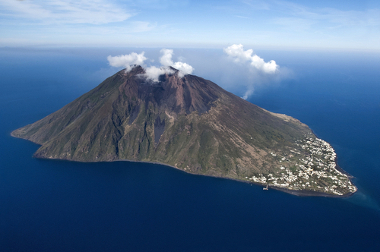An island is defined as any portion of emerged land surrounded by water on all sides. Of course, all emerged lands are always surrounded by ocean waters, but to characterize an island, it is necessary not to present continental dimensions. “Continental dimensions” are understood to be any area larger than Australia, as this country has an area almost equivalent to the smallest continent on Earth, Oceania. Thus, to be an island, the portion of land that emerged must be surrounded by water on all sides and be smaller than the Australian territory.
With this definition, there are thousands of islands around the world, so much so that there is no clear official number. Even because new islands are constantly appearing and others disappearing due to the movements of oceanic circulation. The largest of all is Greenland, with 2,166,086 km², while Indonesia is the largest country made up exclusively of islands.
To facilitate studies on the subject, a classification was established according to the genesis that divides the different
types of islands in four main segments: volcanic, continental, fluvial and lacustrine.At volcanic islands are those formed by the consolidation of magmatic material in oceanic regions through the activity of marine volcanoes or by the different contacts between tectonic plates. Normally, over thousands of years, volcanoes expel a good amount of lava, which accumulates and, over time, reaches the surface, forming the emerged lands. This type of island is very common and usually presents rugged reliefs and recent geological formations, that is, little altered by external agents of relief transformation.

Example of a volcanic island in Italy
At mainland islands are those that form as a kind of extension of the continent, being also called residual islands. They are formed, almost always, from the erosion of continental areas, which causes part of the land to be invaded by the seas, isolating some points. In some cases, they are subclassified as fluvium-marine, when on one side we have the sea and on the other we have the river, such as Ilha do Marajó.
At river islands are those that form when an area is surrounded by two rivers or two channels of the same river, isolating an area from the environment around it. This is the case of Ilha do Bananal, surrounded by the Araguaia and Javaés rivers, which is considered the largest fluvial island on the planet, with an approximate area of 20,000 km².
On the other hand, lake islands, as the name implies, are those that form in areas of lakes, especially of wide and spaced types. They usually arise when there is a large deposition of sediments inside the lake, causing them to accumulate to the surface and forming sandbanks. Over time, these expand and, in some cases, even harbor vegetation.
These are the main types, and there may also be some subtypes or other denominations not mentioned here, such as the atolls, which are usually formed by the grouping of corals over areas located a few meters below the surface. oceanic.
By Me. Rodolfo Alves Pena
